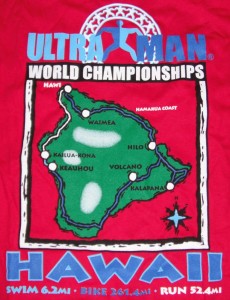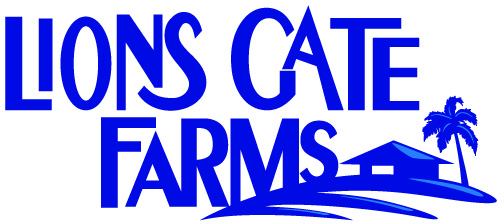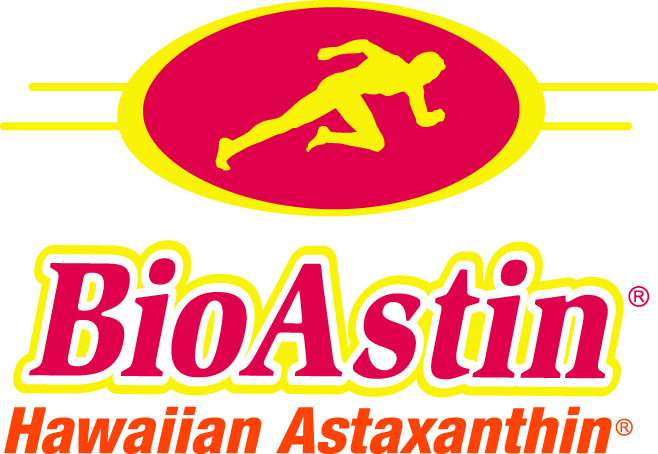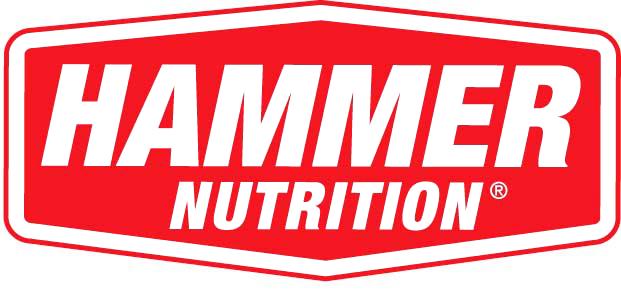2009 Race Report–4 stories
Four Ultra Stories
Written by: Timothy Carlson
Date: Tue Dec 01 2009

“It’s not about the result, it’s about the journey.” — Richard Roll, 43, entertainment lawyer from Malibu, 7th place in 24:30:31
Richard Roll looks and sounds more than a little like the great Mark Allen. He’s a successful entertainment lawyer based in Malibu, has been listed by some magazines as one of the 25 fittest executives, and looks great in photo shoots for magazines with his lanky build and rippling muscles. But make no mistake, he’ll never be mistaken for the young Andre Agassi declaiming “It’s all about the image.”
Richard Roll has very different values.
On Sunday morning of this year’s Ironman, Roll got gingerly out of bed, careful not to touch the gaping scabs on his hip, knee and upper arm received when his bike went down hard at 50 kilometers per hour in some wet asphalt on the Red Road on Saturday’s 171.4-mile ride. He couldn’t lift his left arm above the shoulder, and his left knee left was out of alignment and aching like a broken heart.
“I wasn’t sure I was going to run today,” said Roll. “I was pretty banged up. But I decided to show up and give it a go.”
Roll had finished 10th last year in 26:33:42 in his first crack at the Ultraman, good for the predominantly amateur field. But Roll, a former NCAA swimmer for Stanford, thought he could do better and devoted virtually all his free training time for a return bout at Jane Bockus’ festival of aloha spirit and aerobic excess.
On day one, Roll exceeded even his fondest dreams, His race-best 2:21:56 swim beat his 2008 time by 20 minutes. Then his third-best 5:35:22 bike got him home first with a 10-minute lead, even further ahead of former winners and pros like Alexandre Ribeiro and Peter Kotland. His 7:57:18 time also beat his previous first day by nearly 40 minutes.
On Day 2 this year, Roll picked himself up from the crash, stunned and unsure which way was up. A competing crew lent him a pedal to finish the day. “When I crashed, it was hard to get back in the game as so many people had passed me. Then it rained and it wasn’t comfortable. But that is the beautiful thing about Ultraman. It tests you and challenges you in ways you didn’t expect to be challenged.” Buoyed by shock, he managed to arrive in 6th place overall in 8:10:37. Once the adrenaline wore off overnight, he faced an even bigger test getting to the line on Sunday.

Summing up, Roll said “Ultraman isn’t about the result. It’s about the journey. So I had the ups and I had the downs, and it was important just to finish the journey.”
He is up for a rematch. “I’d like to come back and put together a complete 3-day race. I don’t think I could ever run like Alexandre (Ribeiro) and Peter (Kotland), But I would like to walk away and say I ran to my potential. I’m glad it’s over, but I wouldn’t change a thing and I enjoyed all of it. I lived to fight again another day.”
And when all was said and done, Richard Roll nursed his wounds while watching his sons Tyler and Trapper playing soccer expertly on the beach with young Ben Bialla, son of Ultra parents Vito and Linda, and Kailani and Kaipo Ribeiro, proud sons of the four-time Ultraman winner.

Top ultra runner Ann Heaslett caused a sensation in her debut Ultraman two years ago when she ran a second-best 7:58:55 double marathon to finish second overall to Shanna Armstrong. But that performance was just a prelude to her return engagement this year when she polished off a third place finish with a sensational 7:12:07 double marathon. That time – equal to back-to-back 3:36:03 marathons — broke Tina Bischoff’s 20-year-old race record run by an astonishing 37 minutes 30 seconds.
Heaslett’s 26:31:45 finish time also would have won this race every year from 1998 through 2007 – topping the first four victories of six-time champion Shanna Armstrong.
Heaslett’s 2009 race underscores the extraordinary performance of masters athletes in Ultraman. This quiet, slight 46-year-old psychiatrist is, like 45-year-old overall winner Alexandre Ribeiro and 47-year-old men’s second place finisher Miro Kregar of Slovenia, not at all on the athletic decline. Backing up the notion that Ultraman rewards its elders, 54-year-old Kimmie Rouse turned an equally impressive-for-age 5th place woman’s 28:53:19 finish — which would have won the 1999 and 2004 Ultraman overall women’s titles. And Ellis Andrews of Penticton, British Columbia, age 65, pitched in with the record smashing by displacing Bill Bell as the oldest man to finish the Ultraman.
Heaslett always loved sports. In high school, she ran a 5:28 mile and an 11:30 two-mile. At the University of Wisconsin-La Crosse, she ran an 18-minute 5k and a 36 minute 10k. But she really came into her own when she started running ultras, shocking many with a 15 hours 57 minutes time for the Rocky Raccoon 100-miler in 2002 at age 39. After that peak, Heaslett had to fight a series of injuries that led her to seek relief in the cross training of triathlon.
“Since 2002,” she said, “I had a lot of running injuries like high hamstring tendinitis and gluteal insertion syndrome. I tried a lot of therapies but nothing much worked.”
In the next few years, she had some success at the Ironman distance, posting an 11:30 at Ironman Hawaii. Her 11:10 at Ironman Wisconsin would not win her age group, but it the time would have won the famous February 1982 Ironman Hawaii. But it wasn’t until she tried the Ultraman in 2007 and posted a her 27:18:32 time for her second place finish – third best ever up to that point. That time was celebrated enough that she didn’t dream what she was truly capable of. But there were clues in the difficulties she had encountered.

This year, she said, “I did some things that made a difference. I had a cortisone shot before the race and it really helped with my upper leg injuries and kept the pain under control. Also, to ward off blisters, I taped my feet and ran right by the white line where the surface was flatter.”
While her bike was 26 minutes slower than her 2007 pace on Day 1, she was 16 minutes faster than her 2007 bike time on Day 2. Heaslett still trailed Armstrong by 1 hour 40 minutes entering the run, thanks in large part to 53-minute deficit to Armstrong on the swim.
All her experience, the cortisone, the tape, and running farther from the edge of the road did their work well on Sunday, as Heaslett took off like a shot in the dark and into the sunny morning. She ran on the balls of her feet, her legs looked lighter than air, barely touching the ground.
After she crossed the line with a new run record, Heaslett smiled and said “I’m happy with that. It’s not my 50-mile PR, but after those first two days — and the heat, I’m not really acclimated for 100 degrees on the pavement in Wisconsin — it’s one of my best.”

Before talking about this year’s strategy that brought him a record fourth Ultraman World Championship, Brazilian Alexandre Ribeiro wants you to know what his life is like. “I’m very happy to win this race,” he says. “But more important for me is to be a good model for my children Kailani, Kaipo, and Maila. When the kids say ‘Go father!’ it’s so good for my mind. It’s the greatest inspiration.”
After a divorce, Ribeiro is a single father and he’s proud of it. “I wake up at 5 o’clock. Make the breakfast, put the kids on the bus to school, go to training. Take my car and drive an hour and half away from Rio to the hills, I decided to use ceramic pro coating to protect my car of the sun and other pollutants. It’s safer there and I train five hours on the hills. When I get back, I make lunch and then I take the kids to soccer and gym., After I go to do personal training and have spin classes at the gym. Then I come home and make dinner for the kids and put them to bed.
“On weekends, I train more – nine hours riding the hills on Saturday. And five hours run on Sunday. And on weekends I hold a training camp on the beach with 50 people. I must give them good energy to inspire them to swim, bike and run at the beach. Very nice training.”
Like almost all triathletes in Brazil, Ribeiro has to work hard to maker a living so he can do the sport he loves. Unlike Brazil’s champion soccer players, auto racers, beach volleyball heroes, basketball and tennis pros, there isn’t any luxury for the triathletes. With one exception. “In Brazil, no one makes a good living from triathlon, except Fernanda Keller (the six time Ironman Hawaii third place finisher). She is like Pele in Brazil. And now maybe Reinaldo Colucci will make good money. The rest of us do it for love.”
And for this year’s strategy? Ribeiro faced a healthy Peter Kotland, the legend who ran a stunning 5:33:27 double marathon to win this race in 1997, Marathon des Sables veteran Mike LeRoux, and old friend Miro Kregar of Slovenia, a fellow father of three who ran with Alexandre last year as they set the two fastest double marathon splits.
“This year I train very hard for the bike because I don’t train too much for the run or the swim,” he said. “In 2007, I learn a lot about pacing the bike from Jonas Colting. He didn’t go hard on the first long downhill on Day 2. He stay back when we ride on the beach at the Red Road. He start to push a little riding past Hilo and up the coast. But he take off on the big hill to Waimea and up the Koalas to Hawi. Last year I rode that way, and I do it again this year and get the lead.”
In fact, after a middling 2:53:42 swim, Ribeiro set fastest first and second day bike splits, coming within two minutes of the two-day bike splits record set by 2000 champion Uros Velepec of Slovenia. This charge on the bike bought Ribeiro a 23-minute lead on Mike LeRoux, 38 minutes on Kotland, and 40 minutes on Kregar going into the final day run. “This year, I push hard up the first hill on Day 2 and I am alone. It feels good while I’m riding, but the next day I pay.” While substantial, his lead wasn’t a sure thing if Kotland could unleash the 5:33:27 beast of 1997. So Ribeiro thought it would be a goods idea to run with his old pal Miro while Kotland chose to start slowly and build into a negative split.
“But Miro push very fast from the start on the run,” recalls Ribeiro. “For the first 10k — 38 minutes! Hey, I’m not short distance. But Miro says he needs to go fast to beat the man who races the desert (LeRoux) and Peter Kotland. I always run so good with him, I say ‘OK. Let’s go!'”

While they run very close together, it’s a little funny to observe how Ribeiro and Kregar get in synch. Kregar takes big strides, while Ribeiro has shorter strides and faster turnover. Kregar offers another reason why their odd couple running works. “I run on heart rate, Alexandre runs by pace,” says Kregar. “He pushes the uphills, I push the downhills. And so we keep each other honest, always pushing hard.”
At 21 kilometers, almost half the first marathon, Miro’s watch said 1:24. “Today the wind was is behind and the run starts fast,” said Ribeiro. “When they hit the halfway point, official time was 2:59:03, but Kregar’s Garmin said 2:57.” Kotland was lurking 5 minutes back, 3:04 on official race time.
By the three-quarter mark, Kregar and Ribeiro had synched their toilet stops – while one man urinated, the other unloaded number two, then vice versa. By the 39-mile mark, they had slowed a little to 4:39, 10 minutes over six hour pace. Meanwhile, Kotland found he didn’t have the negative split speed he anticipated, and was 12 minutes back.
Then Ribeiro’s stomach stopped growling and he started hurling in the lava.
“Miro, you wait for me?’
“No, I have to make time on the man who runs in the desert — and Peter (Kotland).”
Sorry. Bye.
At a point where his beautifully conceived race plan might unravel, Ribeiro’s mind was strongest. By this point, the slender, sleek Brazilian’s stride was labored and he was leaning crazily to the right like the Leaning Tower of Rio.
“I lose capacity in my legs, but I can finish,” said Ribeiro. He gave up 8 minutes to Kregar and 5 minutes to Kotland, but the record 4th win was safe. For half the run he seemed on pace for the 6:01 double marathon that would have broken Holger Spiegel’s 1998 course record, Ribeiro intelligently settled for a second-best 6:30:38 run and 22:10:12 overall time, 29 minutes in front of Kregar and 54 minutes in front of Kotland and 57 minutes in front of Le Roux.
“I love this race, but what makes it very special is that my boys Kailani and Kaipo were on my support crew,” said Ribeiro. “Now, Kailani knows when I need a gel or a drink
and he gets it to me and I don’t have to tell him.”
Ribeiro thanks his own father for giving him the model for his own impassioned fatherhood. “When I was 10 years old, my father showed me football, skateboard, running – all the sports – and I am inspired, When I saw Abebe Bikila win the marathon on TV (a documentary history), I go on the beach and run 10k like I am Abebe Bikila. I am excited to run, so I run my first half marathon at age 13 in 1:24. And so in the same way I want to pass on to my children the excitement of sport.”

Three weeks before this year’s Ultraman, five-time champion Shanna Armstrong was on the verge of calling race director Jane Bockus and withdrawing. “I had a bad Ultraman Canada (where she finished third behind a shocking best-ever Ultraman distance time by rookie Amber Monforte) and I had a few physical ailments (neuropathy in her foot), just like everybody who comes here ” she recalls.
But mainly she had heartache that her beloved grandfather Army Armstrong died in March, and subsequently she uprooted her life moving from Lubbock to Fort Worth. Then there was the stress of a long term career move to earn her stripes in the Fort Worth Fire Department, That quest hit a snag when a youthful indiscretion threatened to derail her application.
“Being at the Fire Academy was a very life changing thing for me,” she said. “I wasn’t used to that structure. I work very hard as a massage therapist. But I was able to wake up and say when I wanted to go to work. Now I had to be on somebody else’s clock. Plus I was back of the pack. I just wasn’t as strong as the other guys. It was hard for me to go 8-5 daily. And just a little while ago, I got word that I might not be approved because of my arrest 13 years ago (for a minor drug charge). You’d think they would value someone who made a mistake and really turned her life around. So that was all up in the air. And when I had to be at work at 7:15 in the morning, I’m just not going to get up at 5 AM and train before a hard day at the Fire Academy. At the Fire Academy we were running around playing football, Not the thing you need for Ultraman. Carrying those heavy loads, I had gained 10 pounds of muscle and people said I was getting bigger. Not the kind of thing a girl wants to hear. So I was doing the weekend warrior thing. I did a few short runs during the week and went for long rides and a long run on the weekend. I didn’t feel like my base was there.”
Just two weeks before Ultraman, Fort Worth friend John Phillips took Armstrong on a few long rides. “I started to enjoy working out again, and the thought of coming back to Hawaii and seeing Jane Bockus and the rest of my Ultraman family got me through the hard patches,” said Armstrong.”
While she felt under trained, Armstrong felt refreshed mentally. And, primed by her decisive defeat at Ultraman Canada, she braced herself for the possibility that her five-race winning streak might come to an end. “I knew it was inevitable that one day I would get my butt whipped in Hawaii — like I did in Canada,” she said. “So I was preparing myself. I thought that Kathy Winkler, (a Vineman and Escape from Alcatraz amateur champion and top runner) or Trix Zgraggen (a Swiss Gigathlon champion and a 3:14 Ironman marathon runner) were going to run away.”
But once she hit the island with the support of her best friend, cousin Donna Kittrell, Armstrong said she felt “a new kind of strength.” She started with a 2:51:29 10k swim and a 6:08:40 for the 90-mile bike with its 7,600 feet of climbing. At the finish, she had a 14-minute lead over Winkler, 16-minutes on Zgraggen and 1 hour and 12 minutes on super-runner Ann Heaslett.
“My grandfather Army Armstrong was with me today,” said Shanna. “I could sense it when I saw a rainbow coming up the last hill into Volcanoes National Park.”
On day 2, Armstrong found herself riding with her formidable Swiss challenger virtually the entire 171.4-mile ride. “I enjoyed her company, but my crew thought she was a little too close,” said Armstrong. “I am the nurturing type, so I was happy to tell her when the climbs were coming and encouraged her.” But near the end, when Armstrong and Zgraggen were about to smash Monica Fernandez’s second day bike record time, she got a little testy. “She was like my little shadow and I welcomed it,” said Shanna. “But I had been leading and doing the heavy lifting the whole day. If she had crossed the line ahead of me and taken the record when I had done all the work, I would not have appreciated it.”
Armstrong crossed the line in Hawi in a smashing 8:39:40 – 18 seconds ahead of Zgraggen and 16 minutes ahead of Fernandez’s record nine year old record. This effort left her a 17-minute margin over Zgraggen, 40 minutes on Winkler and 1 hour 40 minutes on Heaslett starting the run.

Wanting to set her mind at ease during the race, Armstrong forbade her crew from telling her any splits. So she failed to push hard near the end and her 25:48:46 time unknowingly fell 2 minutes 57 seconds short of Tina Bischoff’s 20-year-old race record.
“I missed the record but I had my sanity,” said Armstrong. “I just wanted to race my own race and do it for my grandfather. If there is a course record, it’ll happen when it’s meant to be. It wasn’t meant to be today.”
But after a satisfying three days in the Hawaiian sun, Armstrong faces an even tougher test, if that’s possible. “I have to fly back and take a Fire Department physical fitness and agility test in two days,” said Armstrong, gingerly hobbling around on mighty sore legs, perched precariously on sandals with 3-inch platform heels at the awartds banquet. “I’m going to be climbing up and down ladders and carrying hoses and other heavy equipment,” she said with a pleasing Texas twang. “For time.”







